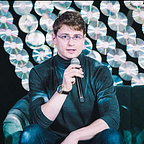Why H2O.ai and Meta Are Calling For Open-Source AGI
The future is at stake. Seriously.
OpenAI was founded in 2015 with the stated goal of making AI “as broadly and evenly distributed as possible.” However, OpenAI today is anything but broadly and evenly distributed. For one, prior to public releases, a select number of firms have enjoyed preferential model access, giving the average person less time to catch up.
GPT-3, released in June 2020, was exclusively available to select developers through a private waitlist. It only became generally available well over a year later. A similar story played out with GPT-4, which rolled out a waitlist before everyone had access. There was also a waitlist for DALL-E, the image generation model. More recently, OpenAI released Sora, a video generation tool, but only to a “select group” of people.
Studies also show that OpenAI’s models are highly biased, and even get worse over time. All these problems have one thing in common: They’re because OpenAI is closed-source. With an open-source model, anyone could download and tweak the model. It’d be broadly accessible, and you could ensure fair and unbiased output through fine-tuning.
Open source leaders call for change
That’s why open source leaders, such as Sri Ambati, CEO and founder of H2O.ai, are criticizing OpenAI’s moves. “AGI should be open source and in the public domain at the service of humanity and the planet,” Ambati said at H2O.ai’s GenAI World keynote. H2O.ai has raised over $250 million to build an open-source AI platform used by over 20,000 organizations.
Similarly, Meta is working on open source AGI, with Zuckerberg explaining that his “long-term vision is to build general intelligence, open source it responsibly, and make it widely available so everyone can benefit.”
This may all seem a bit vague. What does “at the service of humanity” really mean? For one, open-sourcing means creating economic benefits for all. In fact, OpenAI’s closed-source models have already put thousands of knowledge workers out of a job, including writers, entry-level coders, and creatives.
OpenAI engineers, with their prestigious degrees and million-dollar salaries, are far removed from the reality that their technology is impacting the lives of entry-level workers. Employers boast on Forbes that ChatGPT is saving them from having to hire human writers. Published research shows the unsurprising result that freelancers are experiencing reductions in both employment and earnings post-ChatGPT.
These findings are repeated everywhere knowledge workers gather. In the “Freelance Writers” Reddit community, with over 140,000 members, the most upvoted post of all time relays the experience of one writer who lost their client to ChatGPT, with many commenters sharing similar experiences.
Yet at the same time, a handful of OpenAI employees and investors are poised to become extremely wealthy from this technology. After all, OpenAI is seeking a $100 billion valuation, and it shows in their pricing models.
When technology is open source, it means that anyone can read, copy, and modify the code. That means that if an AI model is open source, you could download and run the model on your own hardware, anywhere in the world. You wouldn’t need to pay a profit margin on-top of compute–you would just need to pay for the cost of GPUs and electricity. In contrast, OpenAI puts a margin on top of what it actually costs to run the models.
Not only is OpenAI more expensive than it would be to run open-source equivalents, but OpenAI also gets to gatekeep what you do with the models. New users have a strict limit of $100 a month of usage. Not long ago, users would have to get approval from OpenAI to launch any application at all.
On top of all that, there are major geographic restrictions on who can access and benefit from OpenAI’s AI. The company has restricted access to their models entirely in countries like China, Russia, Belarus, Kosovo, and Venezuela. Even though OpenAI has no technical need to geoblock over 1.6 billion people, they are choosing to exclude a huge portion of the global population from utilizing their technology. This goes directly against the principle of equal access.
How can all this be considered an equal distribution of the benefits of AI? The solution to these problems is clear: OpenAI must open source its models. Relying on a single company or entity to be the gatekeeper of this powerful technology will inevitably lead to even greater inequities. Democratizing access is the only way to truly empower people around the world with AGI.
Some argue that open sourcing AGI is too dangerous and could lead to misuse. But the alternative — allowing it to be controlled by a small group of unelected aristocratic technologists from a single company — is far more dangerous in the long run. We must find ways to responsibly open source this technology while mitigating downside risks.
OpenAI may have started with good intentions, but they have strayed from their founding ideals. Now is the time for the company to correct course. By open sourcing their models, OpenAI can finish the job they started and ensure that the benefits of their groundbreaking AI work are truly shared by all. The stakes for humanity could not be higher.
